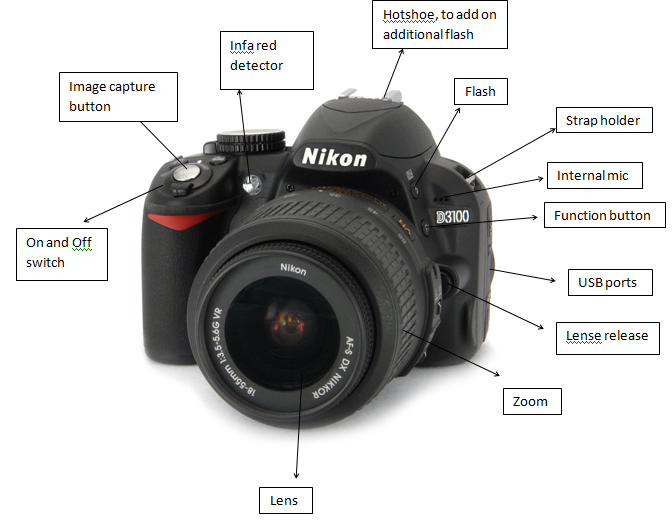In this assignment you will review basic camera terminology as well as the basic parts of the camera. It is not expected that you know all the camera functions and what they do right away, but it is a good idea to become familiar with the terminology. In assignment # 6 you will review the website below and answer the following questions on the hand out provided. And Locate and find a diagram of your specific camera.
http://www.digital-photography-tips.net/digital-photography-terminology.html
Here is a basic 35 mm SLR digital camera. Different models vary but for the most part they have very similar functions. It will be your responsibility to become familiar with your specific model. If you don't have a manual for it look your specific model up on line and copy and paste your camera model. on your post. Locate all the functions below on your specific model.

http://www.digital-photography-tips.net/digital-photography-terminology.html
Here is a basic 35 mm SLR digital camera. Different models vary but for the most part they have very similar functions. It will be your responsibility to become familiar with your specific model. If you don't have a manual for it look your specific model up on line and copy and paste your camera model. on your post. Locate all the functions below on your specific model.
